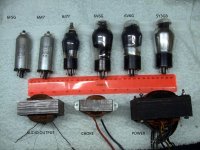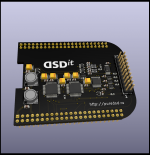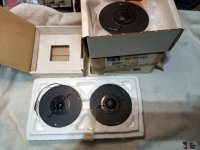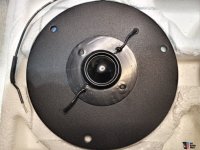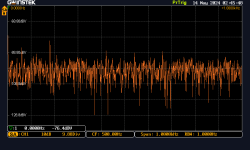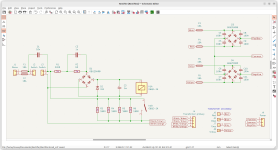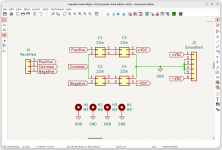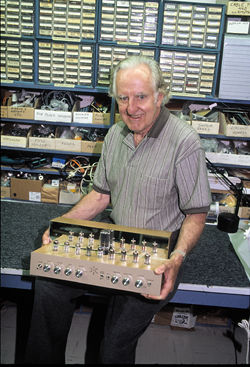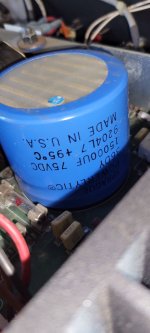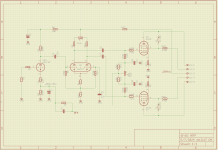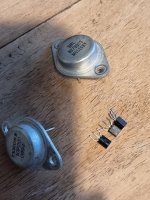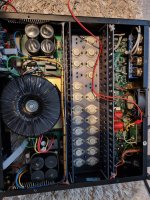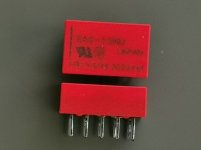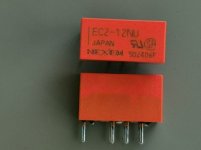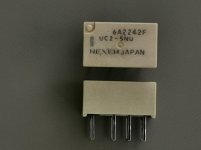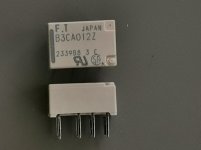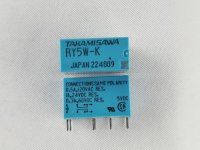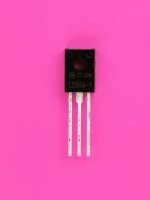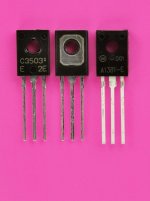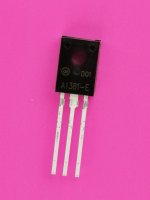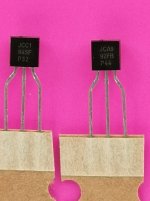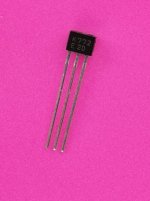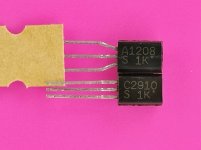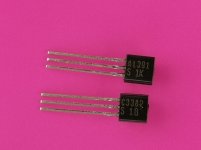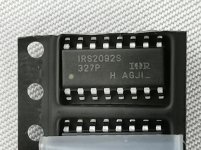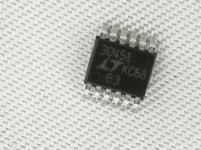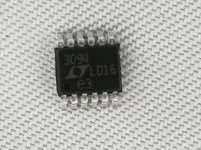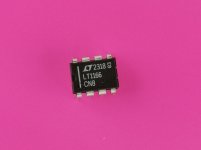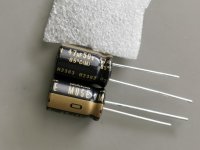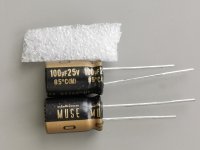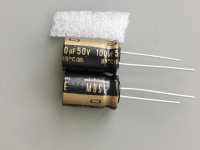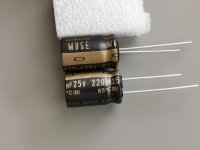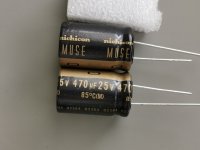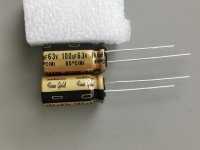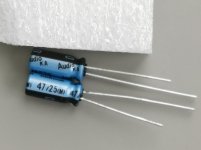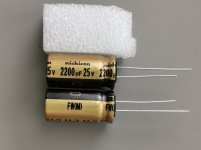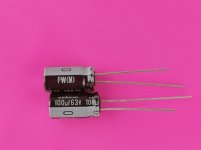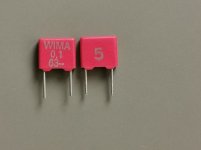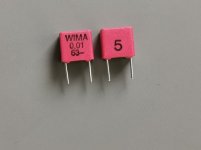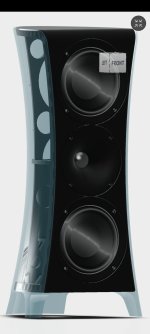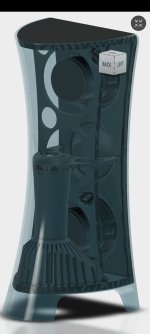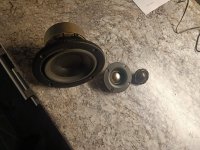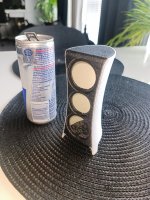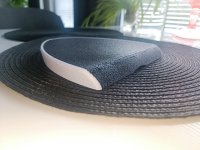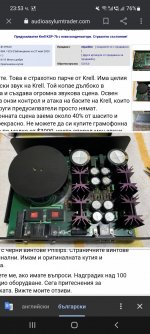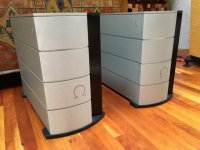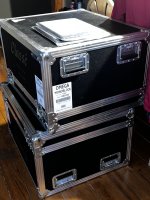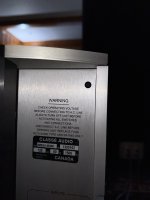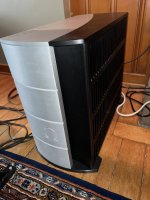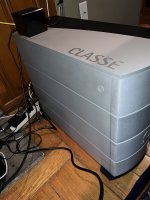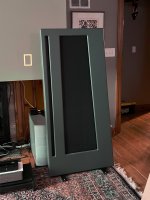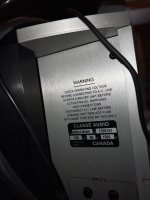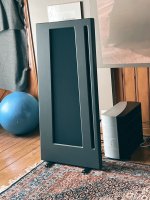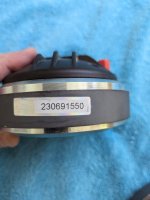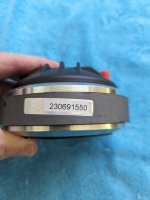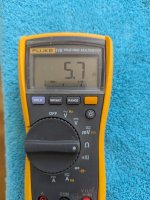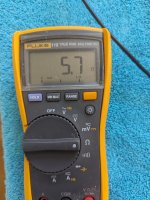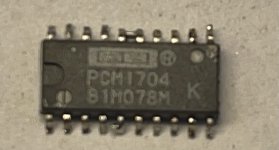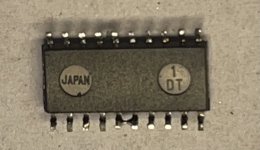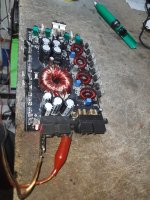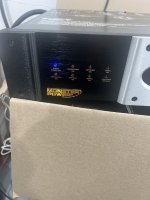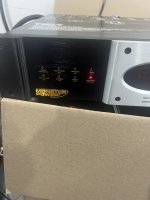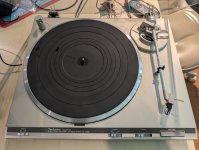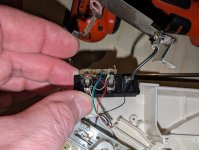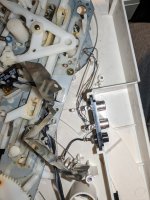I started this thread because there's lot of controversy of what's actually happening between Stylus an Vinyl while playing a record.
The reason not to see it as just a simple gliding process is because the friction coefficient between Diamond and Steel with 0.1 is roughly three lower as the 0.3 between Diamond and Vinyl.
This 0.3 seems rather accurate as measured by Pardee, see attachment 2
Despite the much lower friction, a stainless steel LP proves to be almost unplayable and shows large abrasion damage to Diamond and LP after playing it just once.
So, this posting is a search for the reason, why a vinyl LP can be played over and over with only very minor wear to both LP and Stylus.
I would like to start with a copy of an email I received from Dagfinn with definitions as a reaction to our earlier discussions, it's helpful as a starter for the discussion. In this discussion reference is made to Bastiaans, see attachment 1.
/////////////////////////////////////////////////////////////////////////////////////////////////////////////////////////////////////////////////////////////
Bastiaans states in the intro:
"At high bearing loads complete plastic flow sets in and the needle leaves a permanent indentation track, while at lower loads the elastic deformation is predominant."
- Understanding "elastic" as defined by https://www.britannica.com/science/elasticity-physics "elasticity, ability of a deformed material body to return to its original shape and size when the forces causing the deformation are removed."
- Plastic: "plasticity, ability of certain solids to flow or to change shape permanently when subjected to stresses of intermediate magnitude between those producing temporary deformation, or elastic behavior, and those causing failure of the material, or rupture (see yield point)." https://www.britannica.com/science/plasticity
- Yield point: "yield point, in mechanical engineering, load at which a solid material that is being stretched begins to flow, or change shape permanently, divided by its original cross-sectional area; or the amount of stress in a solid at the onset of permanent deformation. The yield point, alternatively called the elastic limit, marks the end of elastic behavior and the beginning of plastic behaviour." https://www.britannica.com/science/yield-point
- Deformation and flow: "deformation and flow, in physics, alteration in shape or size of a body under the influence of mechanical forces. Flow is a change in deformation that continues as long as the force is applied." https://www.britannica.com/science/deformation-mechanics
So, vinyl is elastic and bounces back until a yield point is reached; where plastic flow sets in, permanently deforming the vinyl. I don't think melting point is at play. Rather the question is when does vinyl reach the elastic yield point, where it starts to permanently deform ever so slightly due to stylus force and maybe increased temperature? Leave a record in the sun for a while, it won't melt, but permanently deform for sure.
From Bastiaans: An important detail is that the "slight permanent indentation" seen is made using a spherical stylus with a relatively small contact patch, which applies a much more concentrated force than a line contact stylus like Shibata.
The Shibata was developed just because of the wear observed from elliptical styli when developing CD4, in the years just before 1970. In order for an elliptical to track CD4 45khz, exceedingly high VTF was needed, and wear was too high. Shibata improved that a lot, and today several line contacts have equal or even greater contact patch compared to Shibata.
A MicroLine tracking at 2g, for instance. It's contact patch is much larger, as is the radius of the same patch. (Or even at lower VTF, like T4P standard 1,25g.)
///////////////////////////////////////////////////////////////////////////////////////////////////////////////////////////////////////////////////////////////////////////////////////////////////////
Conclusions
The main question at the start of this thread was: why is a steel LP unplayable, causing great damage to LP and tip after just one time playing and why is Vinyl so much better suited as information carrier .
- I was hoping on a Skating on Ice similarity, where a thin layer of very low friction “slurry” is formed under pressure. However no further evidence is found to support this for a Diamond tip riding on Vinyl.
- That plastic melts into a fluid under the tip pressure as propagated by some can be completely rejected.
- Temp rise of the Vinyl groove because of static stylus force and dynamic friction while playing, will not exceed at the most a few degrees, where the friction component is dominant.
See below “Temp rise from pressure versus rotational friction”.
- As long as the stylus is faithfully following the track, static pressure on the groove wall is far greater than the additional dynamic pressure while playing despite huge acceleration.
See below “Static versus Dynamic pressure”.
- However, when the stylus is temporarily mis-tracking because of very high modulation because of a stylus force that´s too low or wrong anti skating setting, the stylus will be catapulted into the air and when landing back into the groove it may exceed the yield point, leading to permanent deformation.
See below: “Mis-tracking”.
- The only plausible explanation for the difference between Steel and PVC as the LP’s information carrier may be because of their Young’s modulus that’s 100 times larger for steel as for Vinyl.
Compare both materials for wheels under a car.
Rubber (read Vinyl) with a high elasticity, rides comfortably. Even low profile tires (read Shellac) are still doing an acceptable job, but changing the tires for steel versions will make the care undrivable, with great damage to the steel tires and the road.
Downside however is, the more flexible the groove wand, the more the deviation from the envisaged groove track, leading to distortion of the audio signal.
LAST with their preservative to treat the Vinyl just once, claims extended LP life and IMD figures that may be 10dB lower as without, so does it increase the PVC’s Young´s modulus in combination with a more slippery surface?
Unfortunately I couldn’t find any tests confirming this.
But as Pardee has measured, the coefficient of friction can indeed be lowered from 0.3 to almost 0.1 with certain preservatives.
That’s why I have planned to do the IMD and the Pardee friction test in the time to come.
Permanent deformation
Bastiaans applied a very thin soap film to the groove wall, played a record and inspected after playing the wideness of the trace where because of permanent deformation caused by plastic flow the soap was scraped from the groove wall. With a 17.8u and a 11u round tip, above 2gram stylus force, theory and practice where perfectly in line and confirming the indentation., a formidable mathematic prestation.
Below 2 gram stylus force the deformation slope did suddenly deviate from the prediction maybe because of a surfboard effect according to a suggestion from Walton.
With a 17.8u diamond and 2 g force, stylus pressure becomes 4.8e4 psi, where the yield point of vinyl is 1.4e4 psi, so permanent deformation because of entering the plastic state was to be expected.
With a Shibata or Line Contact Stylus, the pressure or force per square inch becomes much smaller, so most likely with these more modern styli, deformation will be much less with 2 gram force.
Mis-tracking
The earlier mentioned effect of mis-tracking, or stylus loosing contact with the groove, will be followed by a hard landing back into the groove.
According to F=m*a, the pressure on the vinyl because of the huge acceleration force may exceed the vinyl’s yield point, resulting in permanent deformation.
An excellent example is given in the photographic image below, taken with a Keyence VHX-7000 microscope, from a brand new LP played after multiple playings with a Grado Cart with a tracking force of 1.5gram. Stylus shape unknown, but looking at the indent’s shape, most likely a round tip.
The LP in question was Pink Floyd's
Time from Dark Side of the Moon
Permanent damage caused by mistracking
Temp rise from pressure versus rotational friction .
Some documents are mentioning that, under the stylus pressure, the Vinyl is melting, almost giving the impression that the free air melting point is reached.
Between 70C and 80C, PVC starts evaporate chlorine and at 215C PVC really melts.
Using P*V=R*T should help to prove this huge temp rise. However the Boyle / Gay-Lussac law only applies to gasses and is not of any use in this case.
That under enough pressure the elastic state above the Yield point may turn into its plastic state is true, but this not the same as melting. Compare it to overstretching material that doesn’t turn back into its original position. In this case the tip force of a few gram makes the PVC hardly rises in temp as can be measured on the Diamond tip having a very high heat conductivity, however attempt to measure a temp rise in static position showed results smaller as the equipment’s accuracy.
With a coefficient of friction of 0.3 and a stylus weight set at 2gram or 20mN, force to drag the stylus through the groove is 6mN.
When moving on the LP’s outer groove, speed is 0.55m/sec, resulting in 3.3mWatt turned into heat.
The only halfway reliable tip temp measurement I know of is from van den Hull with 60C, so a 35Kelvin temp rise above room temp.
But others like George came with much lower measured results.
Higher than 60C seems very unlikely because playing at 78rpm would increase the 3.3mW into 7.8mW and accordingly resulting in a ca 107C tip temp.
This could permanently damage the vinyl (or shellac) which does not happen, so even 60C may be questionable.
But still assuming the 60C tip temp as being correct, a large 3u*10u contact surface to conduct as much heat away from the tip and a penetration depth of 10u into the vinyl and using a heat transfer ratio k for Vinyl of 0.15, results according to k*(contact area)/(penetration depth) into 0.45uW/K.
The heat energy transferred from a +35Kelvin heated tip to the Vinyl becomes 35*0.45=16uWatt.
Again back to the outer track that moves with 55cm/sec.
In one second the PVC volume being heated is in 55cm*10u line contact*10u penetration depth is 5.5e-5 cm3 and with a specific PVC weight of 1.4 gives 77.7e-5 gram PVC material.
Specific heat for PVC is 0,9J/(gram*Kelvin)
Applying the earlier calculated 16uWatt for one second equates to 16uJ, and with the 7.7e-5 gram this results in a temp rise for the groove of 0.23Kelvin.
Play a bit with penetration dept and line contact area, and it becomes clear that because of friction temp rise of the groove wall will in all cases stay below a few Kelvin.
Static versus Dynamic pressure
Bastiaans measured on a straight groove, where in real life the tip undergoes huge acceleration forces.
A 0.5mg stylus, being exposed to 2.000m/s^2 will see a force of 1 mN according to F=m*a, to be combined in some way with 19.6 mN (or 2gram) tracking force, so that's seemingly not playing a big role. Static pressure seems to be dominating as long as the stylus faithfully follows the groove.
Hans



